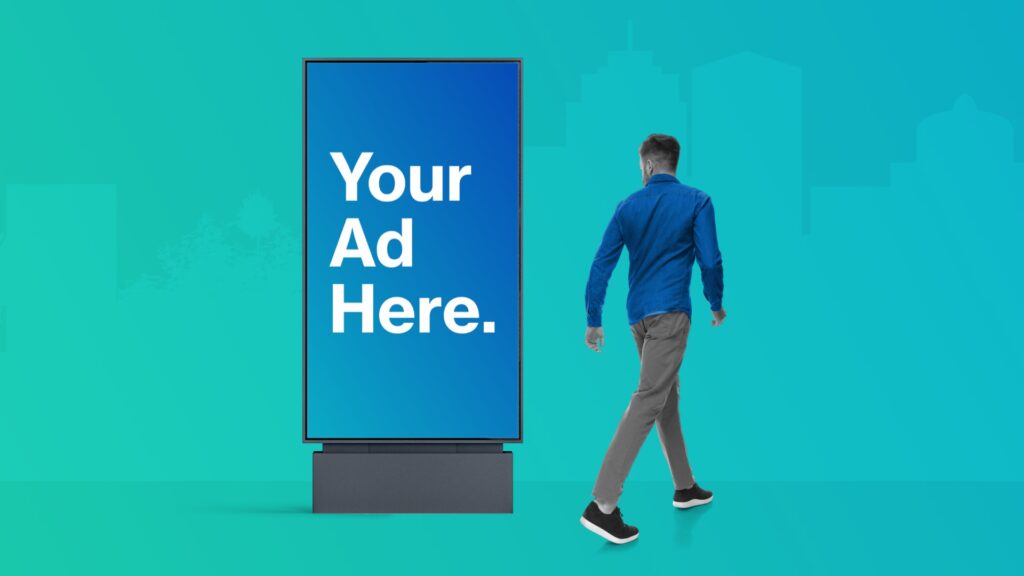B2B Sales Funnel: Complete Guide for Marketers
by Frankie Karrer
8 Min Read
Check out Inc.’s excellent coverage on MNTN’s mission to make TV advertising impactful (and accessible) for all. Learn More
Digital out-of-home advertising is taking over — and not everyone is thrilled about it.

6 Min Read
It’s a tale as old as time: a trend from the past is in again. No, we’re not here to discuss the resurgence of trucker hats, cargo pants and digital cameras (alas, we are but a humble adtech company). That said, much like these questionable styles from the early 2000s, an advertising channel that once reigned supreme is making a spectacular comeback—we’re talking out-of-home (OOH).
But these days, there’s a new twist on the format. Digital out-of-home (DOOH) advertising is taking over, with brands increasingly allocating resources to this updated version of the medium.
Out-of-home advertising isn’t new—apparently the ancient Egyptians were way ahead of the curve on this—but the landscape has certainly changed since billboards and other outdoor signage started going digital. DOOH offers advertisers benefits that static simply can’t, including the ability to target multiple audiences at once, serve a variety of messages, and show relevant content based on the time of day, weather, etc.
“Marketers are rapidly shifting their out-of-home spending toward digital signs because messages there can be easily tailored—for instance, to appeal to a certain demographic of commuters making their way home during rush hours,” the Wall Street Journal reports. “Digital billboards can also display multiple ads, meaning they can generate more revenue.”
Another appeal for brands? Consumers have to view DOOH ads. Unlike on channels like Youtube, because of their very nature, out-of-home advertisements can’t be skipped or turned off.
“Out-of-home is still one of the few mediums left where you can have one ad go to many people,” Rick Wilson, a marketing professor at Texas State University, San Marcos, told WSJ. “They can’t easily turn off those messages like you can with TV or pick up your mobile phone or do whatever. They’re hard to avoid.”
For obvious reasons, out-of-home ad revenue took a hit during the peak years of COVID-19. But with people out and about again, the channel returned in a big way: in 2022, out-of-home advertising in the U.S. generated ~$8.6B, exceeding pre-pandemic numbers.
Part of this recent success of OOH can be attributed to how advertisers are using it. For decades, out-of-home was seen as strictly a top-of-funnel channel, used solely to drive brand awareness. But with digital formats now added into the mix, OOH can include multiple targeted touchpoints to reach people at other stages in the purchasing process.
Because of the new nature of the channel, outdoor ads are getting more creative, too. Last summer, Aperol used digital out-of-home ads that capitalized on warm weather conditions to market their signature cocktail, the Aperol Spritz.
According to Sage + Archer (the company that brought the campaign to life), it “only activated when the temperature hit 19 degrees Celsius [~66 degrees Fahrenheit] or above, and specifically targeted through the run up to weekend relaxation, playing from 1-8pm Thursday to Sunday. They targeted social hubs and high footfall locations across all major cities.”
In March 2023, nonprofit organization Partnership for New York City got in on the DOOH action with its “We❤️NYC” campaign. Aiming to engage with city residents, advertisements run on digital out-of-home screens throughout NYC. Campaign developers did this by design and plan shift messaging based on ad performance.
Out-of-home even offers opportunities for B2B advertisers who may have struggled to create memorable brand marketing moments. B2B companies like commercial real estate firm Jones Lang LaSalle, project management software Monday.com, and marketing automation platform the Trade Desk are using DOOH as a part of their omni-channel marketing efforts—driving awareness and engagement at the same time.
Like most things, digital out-of-home does have its haters. A handful of municipalities have been pushing back against DOOH; the cities of Austin, TX, and Madison, WI, have both successfully outlawed outdoor digital advertisements. Some European metropolitan areas are taking action, as well.
Per the Wall Street Journal: “French cities such as Nantes have also made moves to eliminate many of the digital billboards they already had, arguing that the placements are ugly, guzzle electricity and pressure constituents to buy more than they need.”
According to Nantes Mayor Johanna Rolland, locals approve.
“The residents tell me two things: One, we can breathe,” Rolland said. “And the second is that in the end, we forget about it pretty quickly. Where there had been a billboard a few weeks ago, quickly we get used to the new face of the city.”
While out-of-home has progressed in many ways, some of its capabilities still lag behind those of other advertising channels.
Above, we mentioned DOOH’s ability to target multiple audiences at once. The flip side of this is that digital outdoor ads are competing for attention in crowded places with multiple unknown variables. It’s difficult to ensure these ads reach their intended audiences.
On top of this, measuring success can be tricky. As Tiffany Southwell, Vice President, Out of Home Media at Catalina, writes, “there’s no be-all-end-all metric when it comes to measuring the success of an Out-of-Home (OOH) campaign.”
The results of DOOH advertising may be more measurable than static out-of-home, but the channel’s capabilities lack some of the sophistication of its in-home counterparts.
For advertisers who want many of the benefits of DOOH but also the accurate reporting and precision audience targeting of performance channels like paid social media or display, Connected TV (CTV) may be a good option. Like out-of-home, CTV serves unskippable advertisements. But unlike OOH, on Connected TV, advertisers can know exactly where and to whom they serve ads. Another bonus? CTV performance is easily trackable, making measuring success a breeze.
Other CTV News You Need to Know: